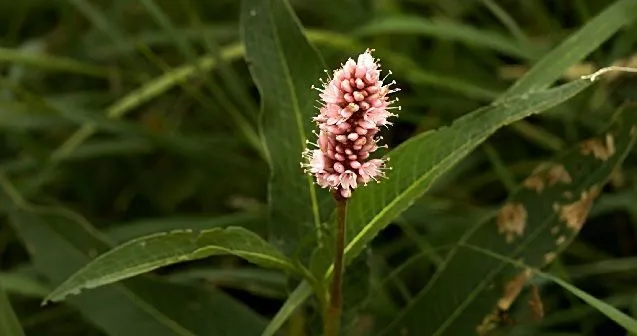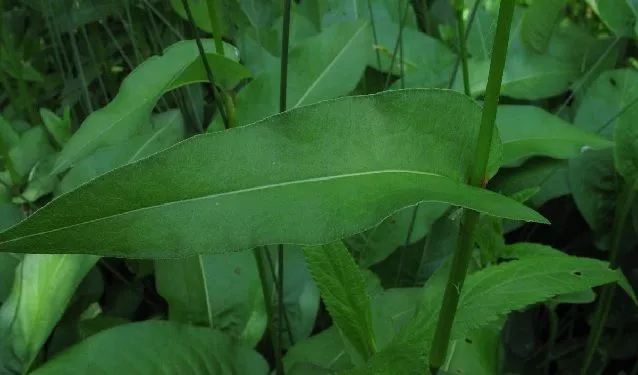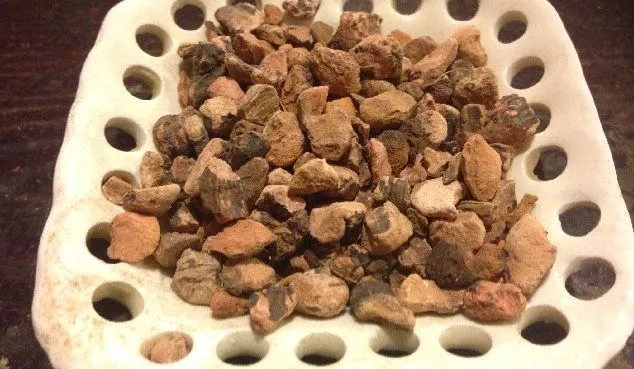A new medicinal plant, little used, for our list of natural remedies at your fingertips. We talk about the bistorta plant, whose scientific name is Polygonum bistorta.
The bistorta it is easily recognizable if its morphology and the typology of its flowering are known, but it is easily confused with any type of grass if its existence is unknown.
This plant, between 20 and 60 cm tall, with leaves with a deep greenery (which can have dark blue motifs) and very attractive, small and pink flowers, grows spontaneously in environments of meadows, river edges and roads and areas with high concentration of humidity.
Has various traditional names according to the area where we are. In the Spanish language, the most established term is bistorta, but there are variables such as the following:
- Minor bistorta
- Twisted Romaza
- Sierpe lying down
- Red weld
Although Polygonum bistorta It has great potential as a medicinal plant, there are not many references for its identification and way of use, since it is not currently used much.
Within this genus, we can also find other plants with different scientific names and, in many cases, with also different healing remedies.
Table of Contents
Genus Bistorta
- Feathery bistorta (Small) Greene
- Bistorta bistortoides (Pursh) Small
- Bistorta vivipara (Linnaeus) Delarbre
- Bistorta officinalis Delarbre

Components and used parts of the plant
Bistorta is a plant that stands out preferentially for its great content in tannins, making it a very astringent medicinal herb.
Several tannin compounds, with a total content of 3% in the plant, of pyrogallol have been identified, but other elements are also present:
- Flavonoids
- Iron salts
- Vitamin C
- Starch
- Gallic acid
- Oxalic acid
Due to its high iron content, is a plant perfectly indicated to treat the processes of anemia, alone or mixed with other medicinal plants that have the same benefit.
As it does not usually occur in many other plants, Polygonum bistorta only the rhizome (underground stem) is usually used, although sometimes the leaves, rich in tannins, are also extracted.
The older the plant, the higher concentrations of these compounds it has, especially in reference to the Gallic tannins, which can reach high amounts (greater than 10%).
Agronomic characteristics of Polygonum bistorta

Different areas have been identified where this plant grows feral. Practically it is spread over several continents, and its presence is totally widespread throughout the world. Europe, Asia and North America have distributed throughout their territory the grouping of plants that make up the bistorta genus.
In Spain, it is easier to find it in the Central Iberian System, the Cantabrian mountain range and the Pyrenees, since it has an altitude range between 800 and 2500 m.
Information about your crop
It is a totally rustic species, which grows in Wetlands such as grasslands and regions of high rainfall. It can reach the meter of height if the percentage of organic matter in the soil is good (greater than 1.5%).
It usually grows in full light, without shadows, although it quickly acclimatizes to its new conditions. Present in soils considered as poor or not very fertile, it prefers to develop on slightly acidic soils.
For its greatest growth, it prefers soils that conserve moisture well or have sufficient rainfall.
However, a greater presence of its compounds has been detected the less water supply is made.
Its flowering occurs from May to August, although in this case the medicinal interest lies in the composition of its rhizome.
Starting Autumn is when the selection of these rhizomes begins, prior to drying. They are cleaned of soil and left to dry in the sun (or in a dryer). Its properties are well preserved if bistorta is stored in a correct, dry and well-ventilated place.
Propagation
Seeds collected after flowering are stored in a cool, dark environment. In spring, with the improvement of temperatures, is planted directly on the ground or pot.
Its germination is usually fast and effective and should not give us any problem, since it is able to grow in hostile environments with the simple propagation of its seeds by the wind.
The plant can also be divided, once it is in the adult state, into smaller plants by separation of rootlets. These new seedlings will be separated from the mother and planted in late spring or early summer.
Medicinal properties of bistorta
The medicinal properties of bistorta are determined by the high concentration of tannins of its root, which can reach, in the best conditions, up to 21% concentration.
The aerial part used of the plant, the leaves, are high in vitamins (A and C) and iron, so they are used as nutritional stimulant and to correct anemias.
We go on to give reference to the benefits that have traditionally been collected from this plant. Already in the time of Charlemagne the bistorta was known to heal wounds and stop diarrhea.
Although we have already mentioned one of them (due to its high presence of tannins), this would be the summary of the medicinal properties of bistorta:
- Because of its great astringency, it can be used to fight diarrhea.
- Favors the wound healing thanks to its anti-inflammatory compounds.
- It is used as restorative tonic.
- For the treatment of hemorrhoids.
- Inflammations in the pharynx such as gargling and rinsing.
- To relieve gingivitis and bleeding gums.
Defining Properties
- Astringent
- Demulcent
- Diuretic
- Febrifuge
- Laxative
- Stych
Due to its composition, it holds the ranking of one of the more astringent medicinal plants, so it acts effectively in the healing and healing of wounds, sores and burns.
Mouthwash vs. gingivitis
Polygonum bistorta it has a great ability to heal wounds, so effective mouthwashes can be made.
To do this, it is necessary to boil for 4 or 5 minutes 2 tablespoons of rhizome coffee of the plant by half a liter of water and then take it to rest.
This amount allows to make several daily rinses that will accelerate the healing of sores and eczema.
Curbing diarrhea
It is one of the best known and currently used properties, due to the high concentration of tannins and its astringent capacity.
To prepare liquid extract of bistorta and take advantage of this remedy, we will use 10 grams of bistorta, which we can mix with other medicinal plants that act in the same way (marshmallow, for example).
boil approximately half a liter of water incorporating the 10 grams of bistorta and let stand.
From this preparation we will not take infusion but only several (3 to 5) tablespoons of the syrup distributed during the day.
As the diarrhea progresses, we will continue to take more or less doses.
Weakness and anemia
Anemia is a common problem in all types of people, especially in menstruating women.
The bistorta can be used as a powerful restorative thanks to the high amount of vitamins and iron that its leaves have.
To do this, we will have to make an easy decoction using 1 tablespoon of crushed leaves per cup, taking it twice a day before meals.

Antiinflammatory
Some of the bistorta compounds have a certain anti-inflammatory action.
We will use 15 grams of bistorta in decoction for each half liter of water, applied with a cloth or gauze on the painful part or wounds.
Home remedies with bistorta
Although the simplest way to prepare the extract or bistorta infusion it is through its decoction, there are also other forms of application, both external and internal use.
- Rhizome powder that can be taken through capsules
- Making a concentrated extract for external applications in wounds, burns or eczema.
- In baths with pure extract, as a powerful anti-inflammatory
- With mouthwashes, to prevent and cure canker sores and sores.
How to manage and dose
Often, bistorta infusion is not only taken to correct gastrointestinal problems, such as diarrhea, it can also be used to gargle in oral infections (gengivitis and others).
It can also be combined with other plants used for the same purpose, such as thyme extract.
For both infusion and gargling, between 1 and 2 grams of dried bistorta root is used for each cup of tea.
The pure extract of the plant can be purchased in commercial establishments and purchased online:
Contraindications identified
Bistorta is a limiting medicinal plant for those people who suffer from heartburn and have a sensitive stomach.
This is due to its high astringency, which can cause gastrointestinal problems.
It is not recommended for use in pregnant or breastfeeding people.
References and additional documentation
- Clapham, Tootin and Warburg. Flora of the British Isles. Cambridge University Press
- Moerman. D. Wooden press of Native American ethnobotany . Oregon.
- Launert. And. Edible and medicinal plants.
- Bown. D. Encyclopedia of Herbs and their Uses. Dorling Kindersley, London
